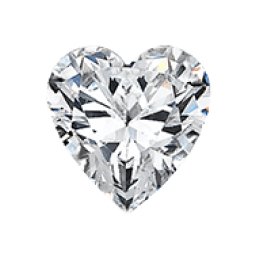BURGUNDY DIAMONDS
Your Diamond comes from the Ekati Diamond mine in Canada’s pristine North, about 200 kilometres south of the Arctic circle. With preferential hiring practices and training programs for northern residents, indigenous-led wildlife monitoring programs, and industry-leading water recycling and composting systems, the mine is at the forefront of community engagement, environmental stewardship and waste management practices.

Mining in Canada is governed by more stringent regulations than other countries. Federal, territorial, First Nations agreements – they’re all in place to protect Canada’s environment and its people. The Ekati Diamond mine adheres to Canada’s stringent environmental regulations and may go above and beyond.
Rough diamonds are found in kimberlite pipes, which were formed in the magma of the Earth’s mantle billions of year ago then forced up in volcanic eruptions. While more than 2,000 kimberlite pipes have been discovered around the world, only a couple dozen are worthy of being mined.

Color
Diamonds actually come in a variety of hues, from colourless to yellow, gray, brown and nearly every shade of the rainbow.
The D-Z scale measures the absence and the presence of colour in a diamond. As the letter grades descend towards Z, more and more colour is detected in a diamond.










A diamond exhibiting a yellow colour beyond the Z range in a table up position is considered to have FANCY COLOUR. Burgundy Diamond Mines has eight Fancy Yellow Intensities (Y1 – Y8), to highlight the light and dark position within each of the four GIA Fancy Colour Intensities ( Fancy Light, Fancy, Fancy Intense and Fancy Vivid).
Clarity
Quality is determined by how clean the diamond is inside. Very few diamonds can be described as “flawless”; most have inclusions which may be caused by carbon spots (piques), mineral inclusions (e.g. olivine, garnet, chromite), bubbles or cracks (gletz). The positioning of the inclusions within the diamond influences its value, as some inclusions may be polished out during the manufacturing process. Some diamonds may be so heavily included that it is almost impossible to see into them.
Cut
A diamond’s cut refers to how it interacts with light. It takes into account the proportions, symmetry and polish that maximizes brightness, scintillation and fire, as well as the outline of a diamond (refer to SHAPE).

Exquisite quality cut to create the optimal combination of brilliance and fire. Reflects nearly all light that enters the diamond.
Shape
The term “Cut” also describes a diamond’s outline and facet placement/style. Shapes other than the standard round brilliant cut are called Fancy cut/shapes.
NOTE: Fancy Shapes can include Pear, Marquise, Oval, Emerald, Radiant, Cushion and Heart

Round

Oval

Emerald

Cushion

Pear

Radiant

Princess

Marquise

Heart
Carat
CARAT WEIGHT: The weight measurement of a diamond.
This weight was standardized to the metric system as 1 carat = 200 milligrams (one-fifth of a gram).
A carat is further divided into points, with 100 points to a carat. In general terms, polished diamonds are weighed to two decimal places.
NOTE: The above images are not to size.

Actual Diamond Size on Size 6 Hand
CARING FOR YOUR DIAMOND
With the right care, your diamond will maintain its beauty.
• Diamonds are recognised as being tough and resilient, but they aren’t indestructible.
• Although a diamond’s hardness makes it resistant to scratches, other diamonds can scratch them. Diamonds can be chipped through impact or come loose in their settings. It is important to store your diamond properly when not in use, preferably in the container your jeweller provides.
• If you want your diamond to maintain its sparkle, don’t wear your diamond when performing everyday activities such as exercising, gardening, or cleaning the dishes. Damage or loss can occur during these events.
• Make sure you clean your diamond regularly by wiping it with a lint-free cloth or using warm water, mild soap, and a soft toothbrush.
• It is also important to have your diamond professionally cleaned by your jeweller and reexamined from time to time.
BURGUNDY REPORTS
BDM DIAMOND REPORTS
The Burgundy Grading Team utilizes industry standard grading criteria to determine color, clarity, cut and carat weight. This report underpins the provenance of Burgundy’s Natural diamonds by stipulating the mine origin of each stone. BDM Reports are only issued for stones 0.30 carats and above.
BDM Stone Identification (ID) Card
The Burgundy Stone ID Card follows the same principles as the BDM Diamond Report, however, is only issued for stones up to 0.29cts.

GIA REPORTS
GIA Natural Diamond Grading Report
This report uses the universally accepted GIA standards to determine a natural diamond’s shape, color, clarity, cut and carat weight – as well as proportions, finish and treatments. It also includes a plotted diagram which maps your diamond, identifying its unique characteristics.
GIA Natural Diamond Dossier®
A compact and concise version of the GIA Diamond Grading Report available for natural diamonds that weigh between 0.15 and 1.99 carats. This report includes all the important 4Cs grading results but does not include the plotted diagram.
GUIDE TO BUYING YELLOW DIAMONDS
Everything you need to know about purchasing a sustainably sourced Canadian yellow diamond in 4 minutes!
Our Burgundy polished diamond specialists sat down with Josh Mulrine from Vivid Jewels at the International Jewelry Fair in Sydney, Australia, to talk about everything you need to consider when purchasing yellow diamonds, including how color, clarity, and modifiers like green-yellow can impact value.
© Burgundy Diamond Mines 2024